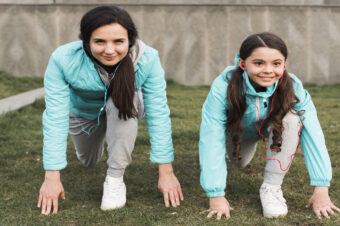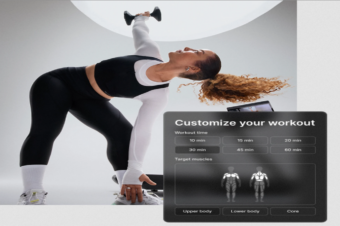


Core Training for Performance
Today we cover core training for performance with the intention of giving an understanding of what it is, why it’s important, and how it not only improves performance, but can go a long way in reducing injuries.
When I go off site for team training, I usually see the traditional type of core training that I believe most people think of. Those include sit-ups, crunches, leg lifts and Russian twists.
A lot of the training is focused on spinal flexion, extension and rotation.
Training for Performance
The main job of your athlete’s core is lumbar stability (lower back), which allows it to redistribute and redirect force through movement and posture.
It’s essential to get stability in the lumbar spine, not movement. If athletes train the core through spinal flexion, extension and rotation they are not efficient at redistributing and redirecting force.
REDISTRIBUTION OF FORCE
Let’s use an example from Formula One racing. These cars are made to collapse and break apart on impact (redistribute the force to the car on impact so the driver assumes less force).
If the car was not made this way, all the force would go directly to the driver, killing him on impact.
We need to think of the spine in the same way. If we have a weak core (external obliques, hamstrings and glutes) leading to an anterior-tilted pelvis (forward tilt), the spine is in excessive hyper-extension.
Performance decreases when a very concentrated area of force to be redistributed is left. Where maybe two lumbar segments get excessively stressed, the result is pain, injury (knees, ankles, lower back, shoulders, etc.)
When the core is stable and strong, athletes have a more neutral position of the pelvis and spine. The forces are then redistributed throughout many of the lumbar segments of the spine resulting in a healthy and high-performing athlete.
POWER PLANT
Most elite athletes are built like tree trunks from their thighs up. Let’s use Albert Pujols for an example:
This guy is built like a Mack truck from his lower thighs, hamstrings, glutes and trunk.
He has great stability. When he goes to swing his bat, he produces a great amount of force into the ground from these powerful force producers.
Forces travel back up through his lower extremities and hips, and are redirected through his core, upper body, all the way through his bat. This is what’s producing the force necessary to smash the ball out of the park.
Thus, the core is not a force producer, it’s a force transmitter.
Athletes don’t need the core to flex, rotate and extend their spine. They need it to produce stability (redistribute) so it can optimally transmit force (redirect) from our power producers.
Yes, athletes need rotation and extension to produce forces, but it shouldn’t come from the spine. It should come from the lower and upper extremities. If an athlete wants to produce maximal strength, speed and power, they must stabilize their body effectively.
Coaches and trainers need to understand the functional anatomy and how it works, but also how to properly assess athletes.
This way coaches can make informed decisions on how to best program and coach their players.
This requires more than just abdominal training. There needs to be a systematic and progressive approach to developing the athlete’s core for maximizing on-field performance and the long-term health of your athletes.
For more information on anything you read in Training Time, email him at [email protected].
Image courtesy Zimbio









No comments so far.
Be first to leave comment below.